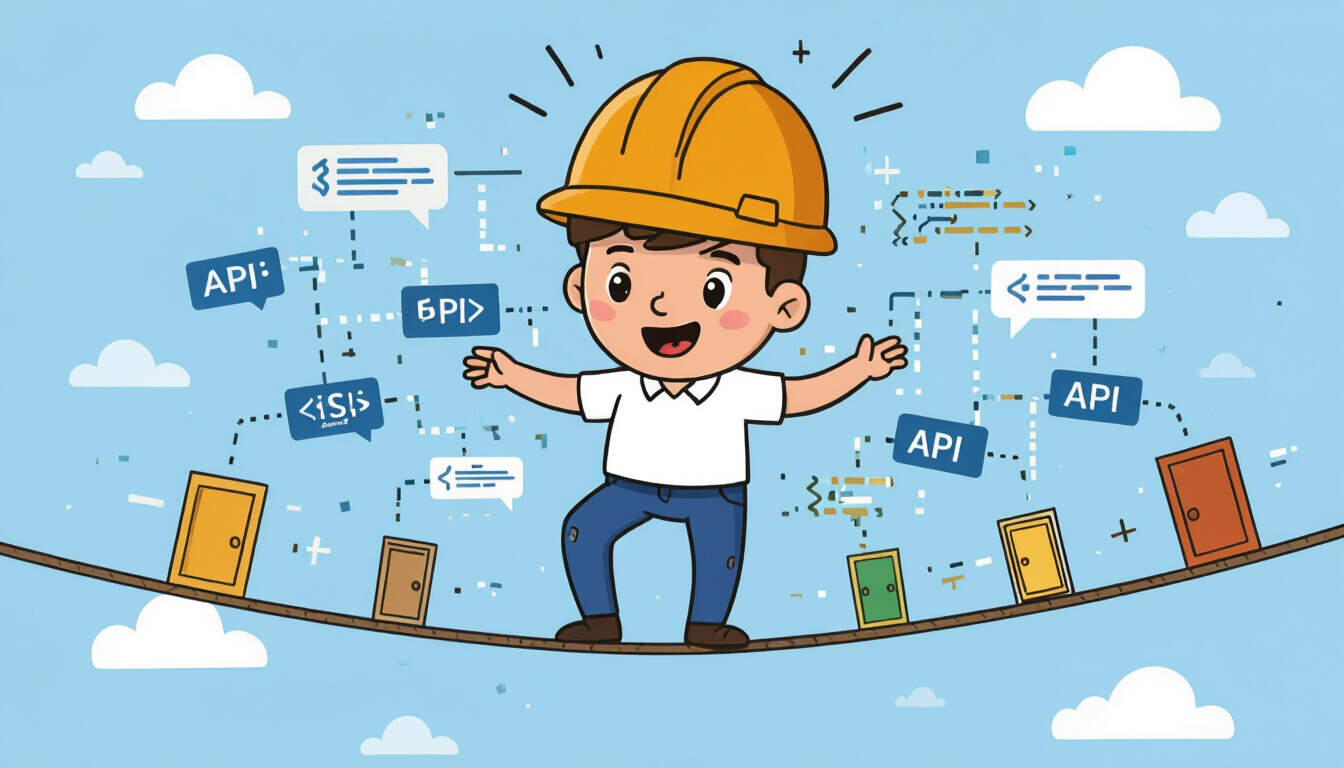Effective API Endpoint Design for Solo SaaS Developers
 by Thaddeus Blanda
by Thaddeus Blanda
API endpoint design is essential for solo SaaS developers building scalable applications. This article covers key principles, step-by-step guides, and practical examples to create efficient, secure endpoints that support business growth, all while keeping things simple and effective.

Designing API endpoints is a core aspect of building SaaS applications, especially for solo developers who handle everything from concept to deployment. Good design ensures that your application communicates smoothly with clients and other services, making it reliable and easy to maintain.
Why API Endpoint Design Matters
In software architecture for SaaS, endpoints serve as the entry points for data exchange. For solo developers, this means creating structures that are straightforward yet flexible enough to adapt as your product evolves. Consider a basic user management system where endpoints handle tasks like creating accounts or retrieving profiles. Effective design reduces errors and improves performance, allowing you to focus on innovation.
API endpoints should prioritize clarity and consistency. For instance, in a solo SaaS project, you might define an endpoint like /users/{id} for fetching user details. This approach helps in organizing code and makes debugging simpler.
Core Principles of Endpoint Design
When building endpoints, start with foundational rules. Use HTTP methods appropriately: GET for reading data, POST for creating new records, PUT for updates, and DELETE for removing items. This method-based structure keeps interactions logical and predictable.
Security is another key focus. Implement authentication mechanisms such as tokens to protect your endpoints. For a solo developer working on a subscription-based SaaS tool, adding basic checks can prevent unauthorized access and safeguard sensitive information.
Versioning endpoints is also important. By including versions in your URLs, like /v1/users, you can introduce changes without disrupting existing users. This practice supports long-term stability in your SaaS setup.
Step-by-Step Guide to Designing Endpoints
Follow these steps to create well-structured endpoints:
- Identify your resources: List out the main data elements in your SaaS application, such as users, payments, or products.
- Define endpoint paths: Use meaningful, hierarchical paths. For example, /products could list all items, while /products/{id} retrieves a specific one.
- Choose HTTP methods: Align methods with actions. If you're building a SaaS app for task management, use POST /tasks to add a new task.
- Handle request and response formats: Stick to JSON for data exchange, as it is widely supported and easy to work with.
- Test thoroughly: Use tools like Postman to simulate requests and verify responses.
In practice, a solo developer might apply this to a simple invoicing SaaS. Start by sketching endpoints on paper: GET /invoices for viewing all, and POST /invoices for generating new ones. This hands-on method ensures everything aligns with your business needs.
Real-World Examples
Let's look at a practical scenario. Imagine you're developing a solo SaaS platform for content creators, where users upload and manage files. Your endpoints might include:
- GET /files: Returns a list of user files.
- POST /files: Uploads a new file, with the body containing file details.
In this setup, ensure that each endpoint processes data efficiently. For instance, if a user uploads a large file, rate limiting can prevent server overload, maintaining smooth operation.
Another example involves error handling. When an endpoint encounters an issue, like a missing resource, return appropriate HTTP status codes such as 404 for not found. This feedback helps clients understand problems quickly, reducing frustration in your SaaS environment.
Best Practices for Maintenance
To keep your endpoints performing well, document them clearly. Use tools like Swagger to generate API docs, which outline what each endpoint does and what it expects. For solo developers, this saves time later when scaling or debugging.
Monitor usage patterns to identify bottlenecks. If an endpoint like /payments sees high traffic in your SaaS app, optimize it by caching responses where possible. Additionally, keep endpoints modular so updates don't affect the entire system.
Finally, consider scalability from the start. Design endpoints that can handle increased loads as your user base grows, ensuring your solo SaaS remains viable over time.
In summary, thoughtful API endpoint design empowers solo developers to build strong SaaS applications. By focusing on clear structures, security, and practical steps, you can create systems that are both effective and sustainable.
